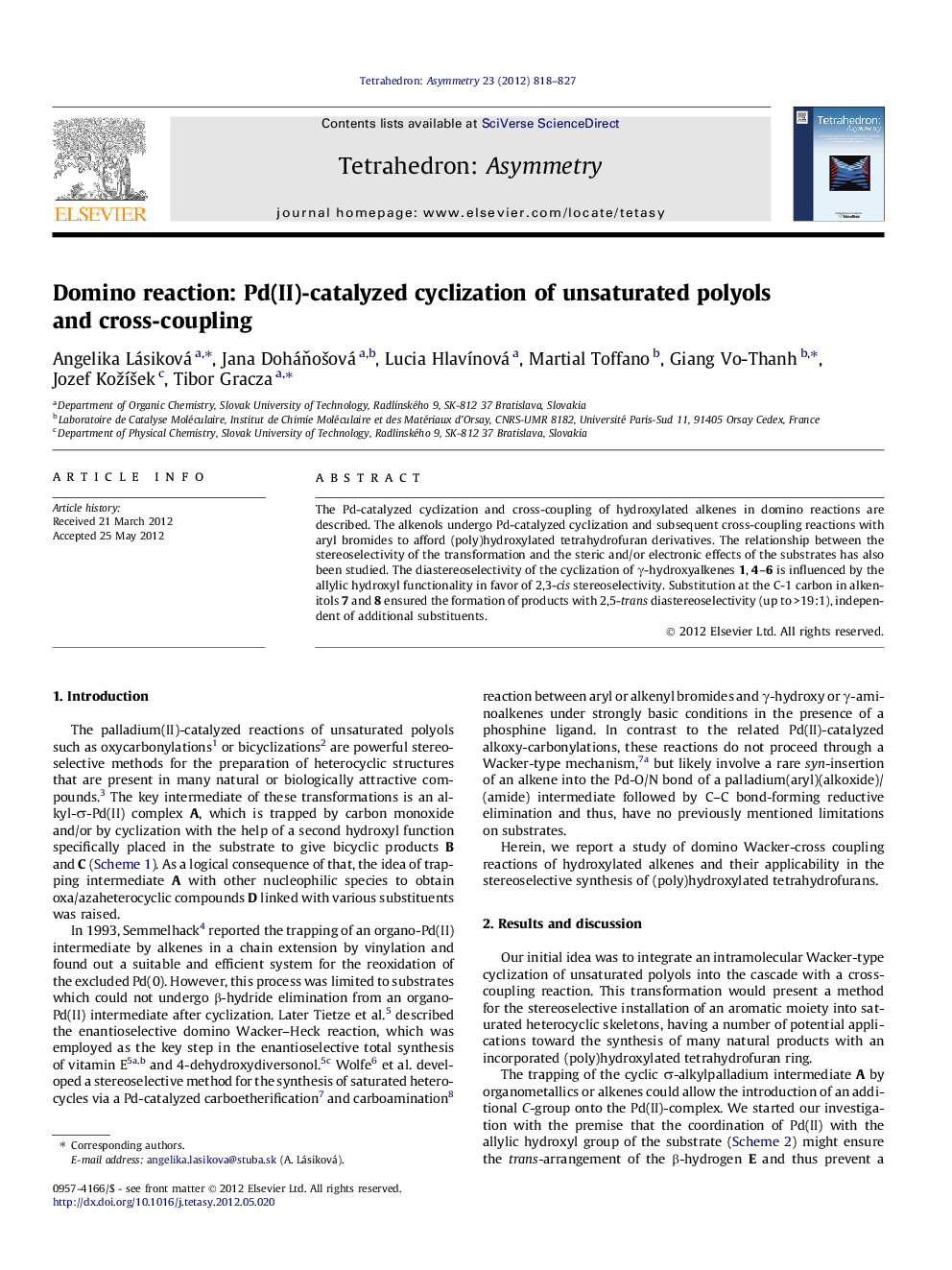| Article ID | Journal | Published Year | Pages | File Type |
|---|---|---|---|---|
| 1346601 | Tetrahedron: Asymmetry | 2012 | 10 Pages |
The Pd-catalyzed cyclization and cross-coupling of hydroxylated alkenes in domino reactions are described. The alkenols undergo Pd-catalyzed cyclization and subsequent cross-coupling reactions with aryl bromides to afford (poly)hydroxylated tetrahydrofuran derivatives. The relationship between the stereoselectivity of the transformation and the steric and/or electronic effects of the substrates has also been studied. The diastereoselectivity of the cyclization of γ-hydroxyalkenes 1, 4–6 is influenced by the allylic hydroxyl functionality in favor of 2,3-cis stereoselectivity. Substitution at the C-1 carbon in alkenitols 7 and 8 ensured the formation of products with 2,5-trans diastereoselectivity (up to >19:1), independent of additional substituents.
Graphical abstractFigure optionsDownload full-size imageDownload as PowerPoint slide
(2R,3R,4S,5R)-3,4-O-Isopropylidene-5-phenyl-2-((naphthalene-2-yl)methyl)tetrahydrofuran-3,4-diolC24H24O3[α]D25=-19.5 (c 0.83, CHCl3)Source of chirality: d-ribonolactone, diastereoselective synthesisAbsolute configuration: (2R,3R,4S,5R)
(2S,3R,4S,5S)-3,4-O-Isopropylidene-5-phenyl-2-((naphtalene-2-yl)methyl)tetrahydrofuran-3,4-diolC24H24O3[α]D26=+26.8 (c 0.31, CHCl3)Source of chirality: d-ribonolactone, diastereoselective synthesisAbsolute configuration: (2S,3R,4S,5S)
(2S,3R,4S,5S)-3,4-O-Isopropylidene-5-methyl-2-((naphtalene-2-yl)methyl)tetrahydrofuran-3,4-diolC19H22O3[α]D26=+77.2 (c 0.246, CHCl3)Source of chirality: d-ribonolactone, diastereoselective synthesisAbsolute configuration: (2S,3R,4S,5S)
